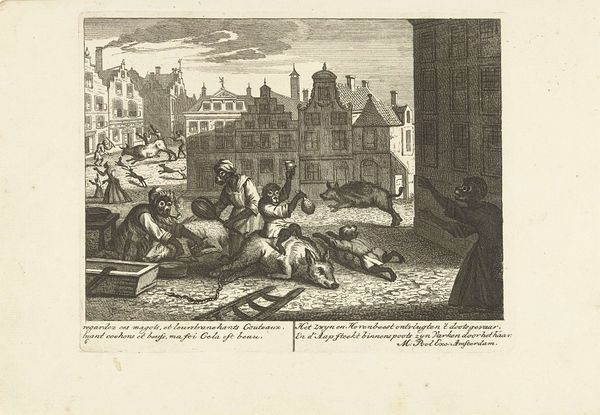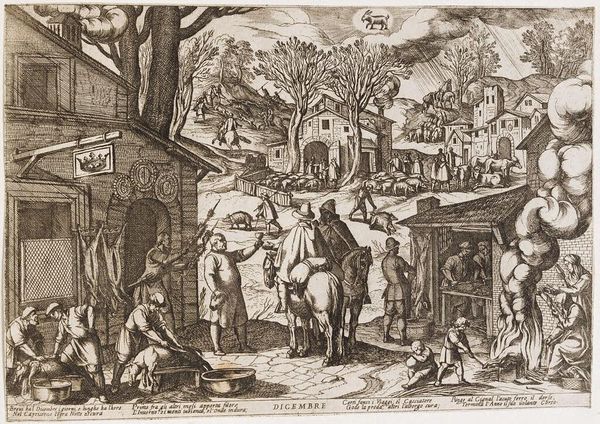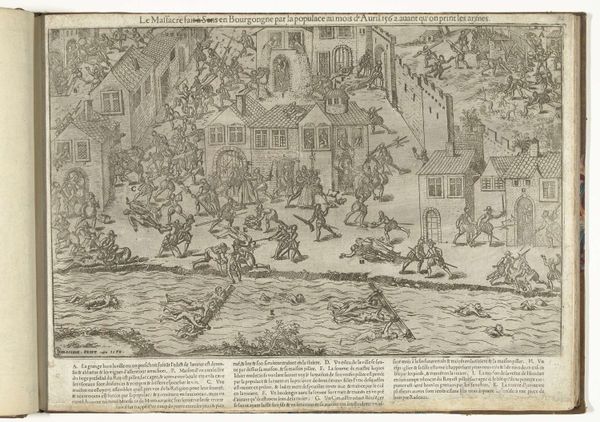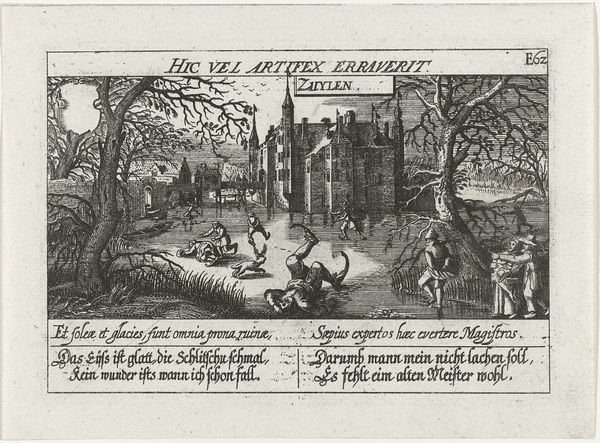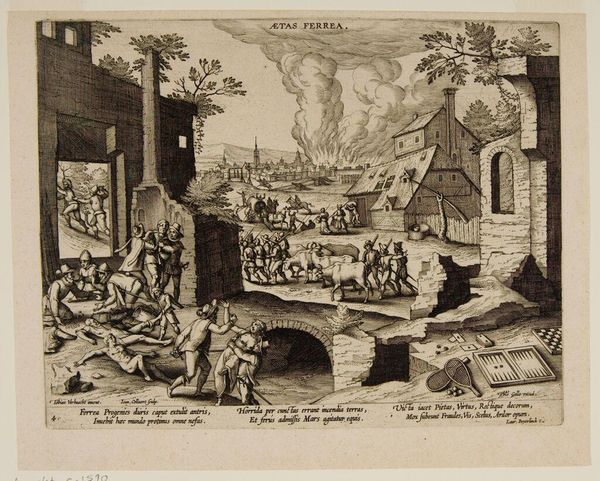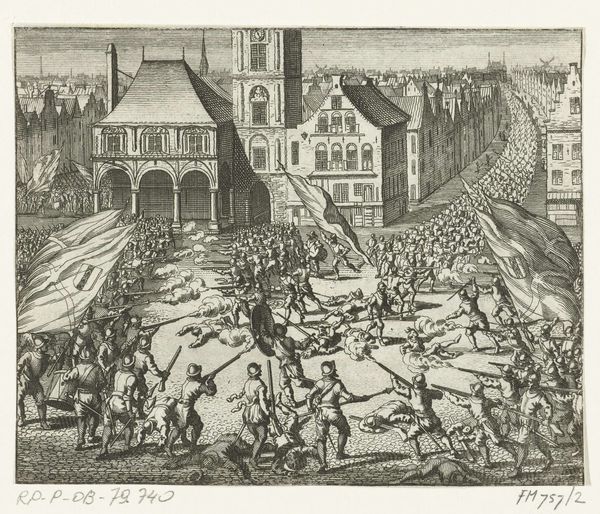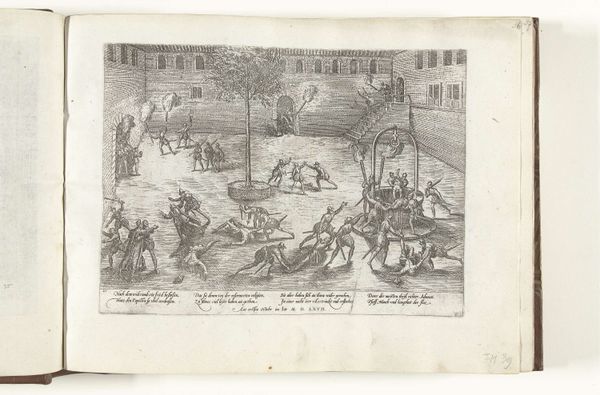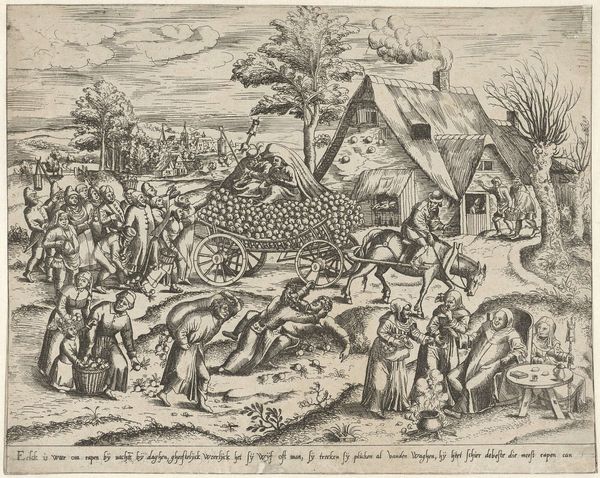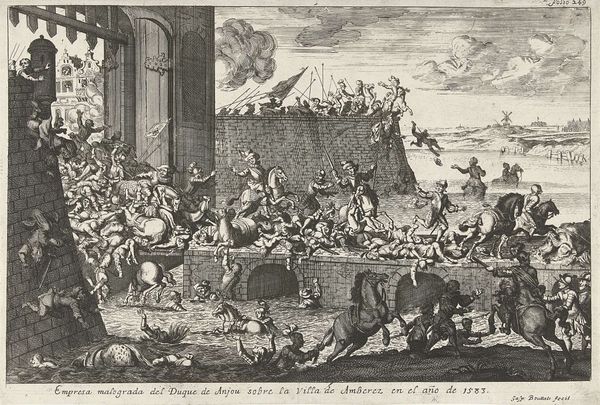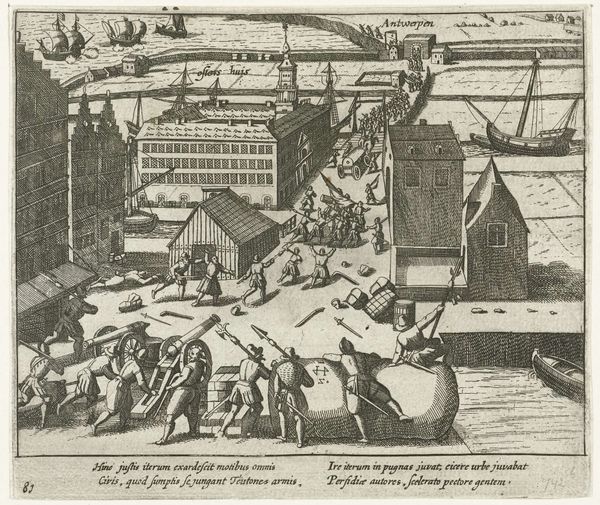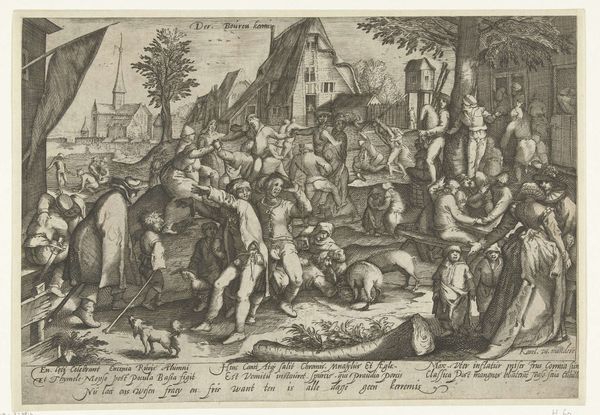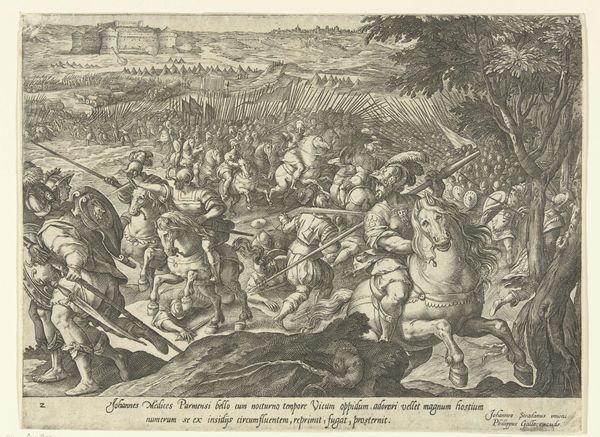
print, ink, engraving
#
medieval
#
narrative-art
#
pen drawing
# print
#
figuration
#
ink line art
#
ink
#
cityscape
#
genre-painting
#
history-painting
#
engraving
#
realism
Dimensions: height 136 mm, width 161 mm
Copyright: Rijks Museum: Open Domain
Editor: So, this is an engraving titled "Moord te Oudewater, 1575," created sometime between 1613 and 1615 by an anonymous artist. It depicts a chaotic scene in a city. The mood is definitely grim, and the details are incredibly graphic. I'm immediately struck by the violence. How do you interpret this work in terms of its historical and social context? Curator: It's crucial to see this print as more than just a depiction of violence; it’s a visual argument embedded within the Eighty Years' War and the Dutch struggle for independence from Spanish rule. Oudewater was indeed the site of a massacre, and this print serves as propaganda, fueling the anti-Spanish sentiment. Consider the way the artist emphasizes the chaos and brutality inflicted upon the civilian population. How does this narrative of victimhood shape Dutch identity at the time? Editor: That makes sense. It's not just showing what happened; it’s shaping how people *felt* about what happened and probably motivating resistance. Curator: Exactly! It also speaks to the broader theme of resistance against oppression. The 'genre-painting' and 'history-painting' tags are helpful here; but let's remember the print aims to position the Dutch as righteous defenders of their "federa Belgis" – their liberties – against a tyrannical oppressor. Think about who might have been excluded or misrepresented in this particular account? Editor: I hadn’t thought about that – like maybe the Spanish perspective? Or perhaps those within Oudewater who collaborated with the Spanish? It's easy to see a very one-sided narrative here. Curator: Precisely. And considering the religious dimension of the conflict, we must ask whose stories are being amplified and whose are being silenced. The visual culture of the Dutch Revolt was critical in solidifying a sense of collective identity. Editor: This makes me see it as more than just a historical document; it’s a politically charged statement wrapped in the guise of a historical record. It definitely feels like the artist had an agenda. Thanks for pointing out how this piece speaks to a larger historical narrative. Curator: And hopefully you can now see how a deeper examination reveals not just a history lesson, but a powerful illustration of the complex interplay of identity, power, and representation.
Comments
No comments
Be the first to comment and join the conversation on the ultimate creative platform.
